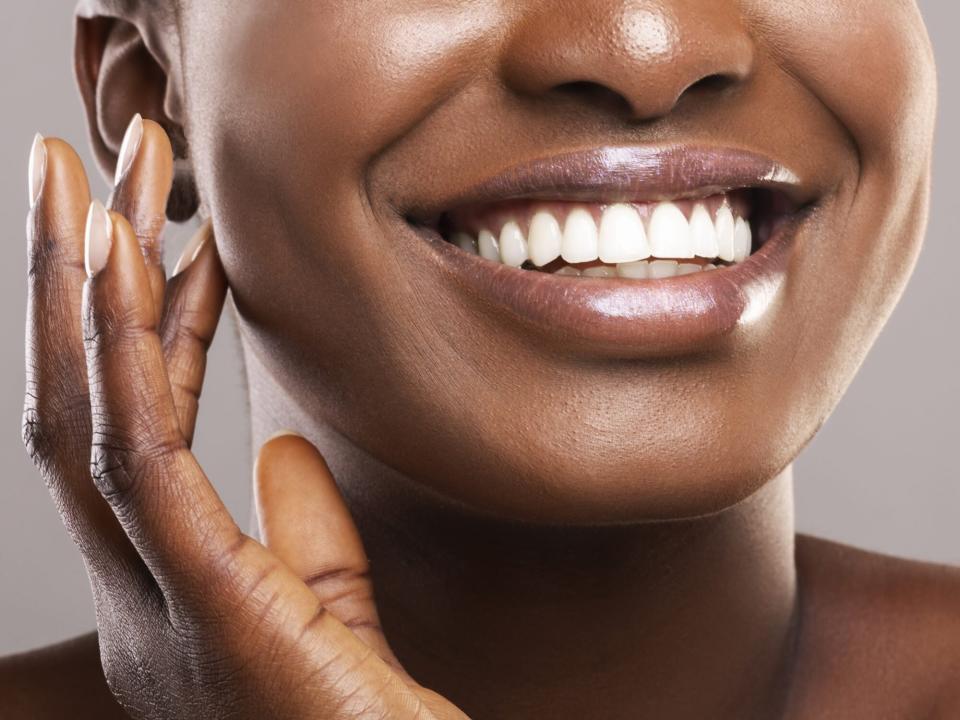Is Water Flossing the Key to Whiter Teeth?
Ever since I was a child, I've been told to floss my teeth every night. However, it wasn't until my partner told me about my morning breath did I realize I probably should've taken my dentist's advice. A few months ago, I started flossing on the regular, but when I visited my dentist for my yearly cleaning, she told me to consider water flossing as well.
At first, I rolled my eyes. Did I really need to spend money on another product or could I continue flossing with my single-use flossers? Thankfully, the folks at Waterpik hooked me up with the new Waterpik Sonic-Fusion 2.0 Professional Flossing Toothbrush ($141, amazon.com) for me to test out, and now I'm never going back. My teeth feel so much cleaner after every use, but they look whiter, too.
But don't take it from me. Here, read what two top dentists have to say about the benefits of water flossing and what you need to know about this new-school technique.
RELATED: 7 Common Teeth Whitening Mistakes to Avoid

Getty Images
What are the benefits of water flossing?
Unlike regular floss which only gets the grime in between your teeth, Lauren Becker, DDS, PC, a general and cosmetic dentist in New York City, says that water flossers do a great job at removing additional bacteria debris and food particles that brushing and flossing do not. "I also highly recommend it for gum health, as it reduces the chances of gingivitis and gum disease," she says.
If you're interested in teeth whitening, Waterpik says the product removes 25 percent more stains than brushing alone, which makes sense as it's essentially a power-hose for your teeth.
Lastly, water flossing is ideal for people who have difficulty using regular flossing by hand or have dental work, such as braces, that make traditional flossing impossible.
What's the best way to water floss?
For starters, Robert Raimondi, DDS, a prosthodontist at One Manhattan Dental, says that you should be using your water flosser twice a day. Before using your water flosser, he recommends setting it up at a 50 percent intensity and then moving along the gum line of each tooth, focusing in between the teeth.
"It's very important that the angulation of water steam is perpendicular to the teeth," Dr. Raimondi adds. "An issue with using a water flosser is that if pointed down at the gum tissue it can cause harm, push food and debris into the spaces between your tooth and gum tissue."
Also, make sure to let go of the water flossing button when you're ready to spit. It seems intuitive when you read it, but take it from me, you want to be mindful you don't accidentally spray yourself in the face.
Dr. Becker shares another tip to make the experience even better: "Fill the water flosser with water which can be mixed with a little mouthwash to add flavor, providing anti-plaque benefits that mouthwash offers."
Should you replace your regular floss with a water flosser?
In short, no. "Water flossing should only be in addition to traditional flossing and never replace it," says Dr. Becker. "As great as water flossing is, traditional flossing gets in between the teeth the way a water flosser does not." Dr. Raimondi agrees that the best approach is to use both techniques, as well.
What's the best way to clean your water flosser?
Dr. Becker suggests dumping out the water every night to avoid bacteria collecting and musty smell. "I let the reservoir dry on a paper towel and wipe down all the other parts. Then, I reassemble it in the morning once it's all completely dry," she says. Additionally, Dr. Becker says that some dentists suggest cleaning the reservoir with one part vinegar and two parts water, but that she only does it if it's absolutely necessary as she finds the taste of vinegar lingers for a bit.

 Yahoo Movies
Yahoo Movies 